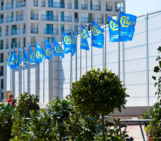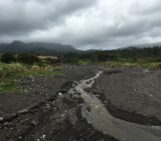
The ultimate scope of scientists is to publish their research advancement and share it with the scientific community and civil society. Researchers, whether coming from academia or research institutes, publish their results in peer-reviewed journals, that are usually highly technical and often incomprehensible to anyone except the major experts in the field. In some subjects is inevitable given the nature of the research contents.
The scientific editorial world is punctuated by thousands of different highly specialized journals, although some of the oldest, e.g. Nature (1869) publishes articles across a wide range of scientific fields being addressed not only to research scientists, the primary audience but also for the educated public in order to shorten the gap between the two worlds. In today’s interview, we talk with Dr Yang Xia, Associate Editor of the journal Nature Communications for the Earth team. Her expertise is focused on environmental social science, environmental policy, socio-economics, sustainability and climate-related health risks and she will give us some insights into the editors’ job as well as into the unsolved questions in the field of the socio-economic impact of natural hazards.
Hi Yang! Thanks for accepting being interviewed by NhET. Can you tell us something about you? What led you to be Associate Editor of Nature Communications?
After completing my PhD degree, I felt a great desire to stay in a broader frame of science rather than focusing on a niche point. In this respect, my current job facilitates my love for diversity and inclusion because I am now able to read papers on various subjects from a wide range of author groups. I am also interested in scientific communication. As editors, we work in a company, but we still have loads of opportunities to actively communicate with researchers via conferences, lab visits and masterclass.
Being Associate Editor for Nature Communications is definitely challenging and inspiring for many Early Career Scientists (ECSs). Also, it might be a good career opportunity for some of them. What are the main duties and skills of your specific position?
As the first social science editor at Nature Communications, I handle manuscripts on socio-economics, climate-related health risks, climate policy and sustainability, which can constitute 60% of my work. I also need to be active in commissioning contents on key areas to be developed, including comments, perspective and review articles. Apart from assessing these editorial tasks, I am also responsible for promoting my covered areas through conferences, lab visits and masterclass and simulating collaborations across journals through communities.
As we are a fully online interdisciplinary journal, we receive large volumes of new submissions each week. Papers previously sent out to review might come back with reviewer reports while papers sent back for authors’ revision might also come back with refinements. Considering such a high workload and fast-paced working pattern, I would say editorial skills, persistence, time-management and stress-resistance will be crucial for taking up the editorial role. At the same time, as our duty varies from scientific communications to assessing manuscripts with a wide range of topics, communication skills and scientific curiosity are equally the keys to success.
Publishing is one part of the researcher job that can intimidate ECSs at the start of their career, and to publish on very renowned journals even more. What are for you the key components that can’t be missing when submitting a manuscript to journals such as Nature Communications? What to do you feel to suggest to our ECS audience?
Novelty, broad interests, multidisciplinary help, clear focus on hypotheses to be tested, a clear storyline, conceptual advances, new insights and in-depth discussions all form a high-quality manuscript in order to be considered further in any journal as at Nature Communications.
Don’t discount writing a good story; don’t be scared to approach senior people for advice; believe in your results; highlight the novelty and key message in the cover letter but avoid overselling the results. At the same time, don’t hesitate to get in touch with editors! Please, look at the editor pages if you need assistance so that you will know who will be the best person to approach.
Moving into your area of expertise, what are the unsolved questions related to the assessment of socio-economic impacts of health outcomes resulting from natural hazards? Which are the implications these studies have on society and the policy-making?
Natural disasters are exacerbating in terms of both frequency and intensity. They might no longer occur once and leave sufficient time for the economy to be fully recovered and the society to be fully adapted. Focusing on the economic side: 1) how to estimate more precisely the economic loss, both direct loss through physical damage and indirect loss through interruptions to economic activities, resulting from the occurrence of multiple disasters, and 2) how to better predict the expected full recovery period for post-multiple disaster economy will be key areas to be solved.
I have recently attended the 2019 Global Platform for Disaster Risk Reduction, which was held during 13th -17th May in Geneva, Switzerland. The keyword for this year is ‘inclusion’. From a society side, this highlights the need for ensuring equal access to resources and aid during disaster aftermath between male and female, adults and children, health and disabled people. To achieve this, it will require a better understanding of the current inequalities in disaster risk mitigation and adaptation. This, from my viewpoint, can be another area that urges more research efforts in the future.
Interview by Valeria Cigala and Giulia Roder




